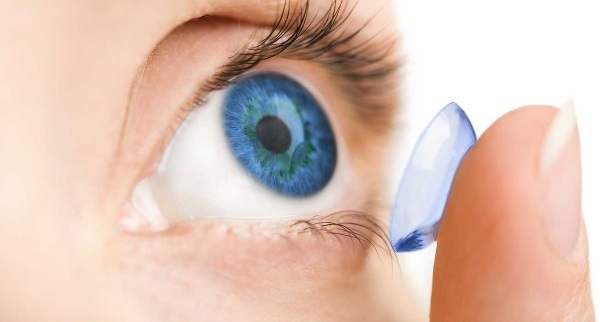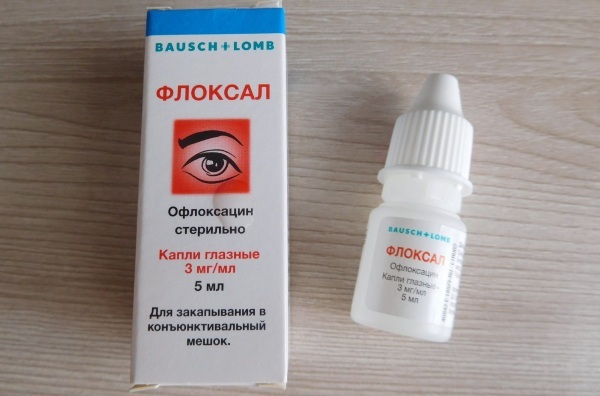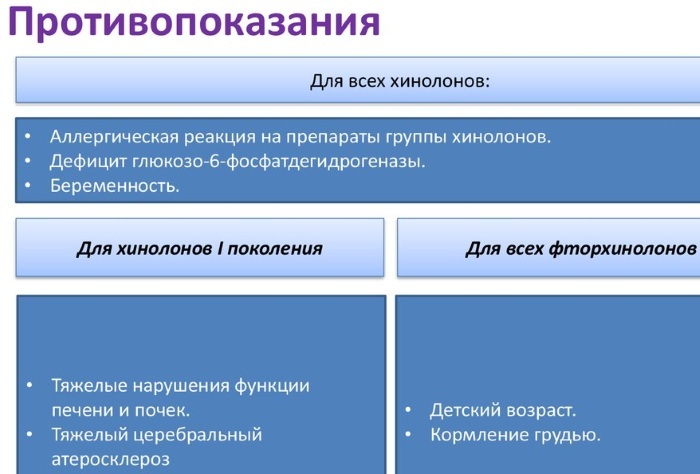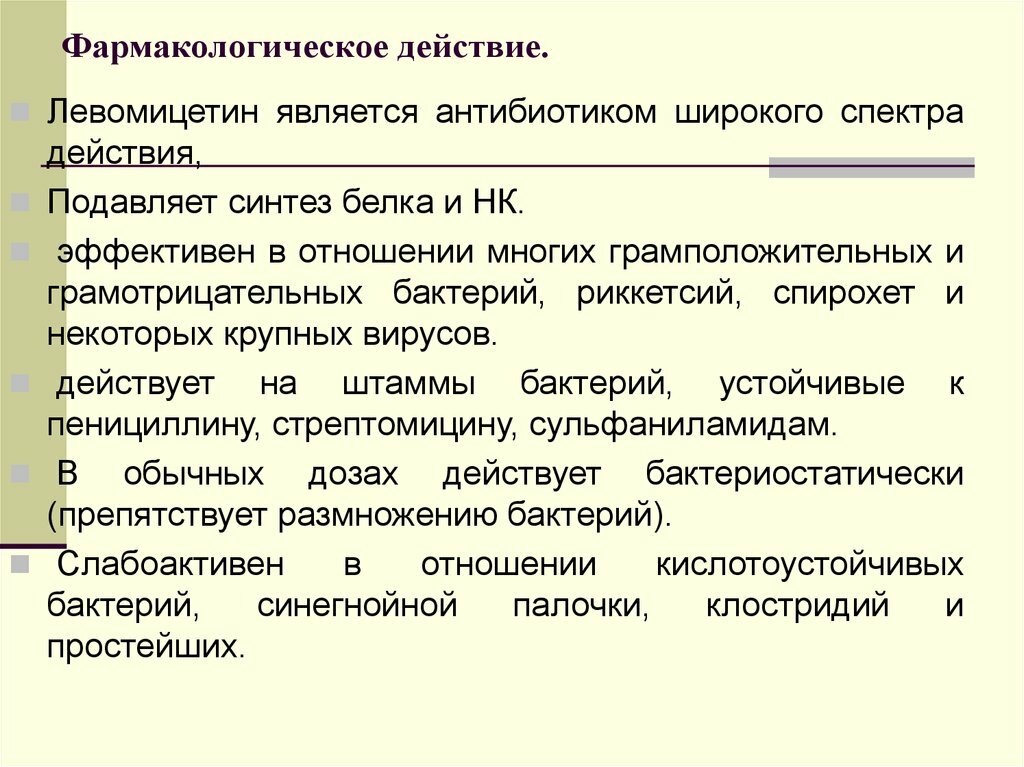Floxal belongs to antibacterial drugs fluoroquinolone series. Eye drops help to suppress pathogenic microorganisms both in the growth phase and during the rest period.
In ophthalmic practice, products containing fluoroquinolones have been used since the 90s. XX century. and have proven themselves well. The price of the drug is in the middle range. There are also cheaper analogs, mainly of Indian and Russian production.
Record content:
- 1 Forms of release and composition of the drug Floxal
- 2 Pharmacological properties
- 3 Pharmacodynamics and pharmacokinetics
- 4 Indications for use
- 5 Contraindications
- 6 At what age can eye drops be used
- 7 Instructions for use, dosage of the drug
- 8 Side effects
- 9 Overdose
- 10 special instructions
- 11 Drug interactions
- 12 Analogs
- 13 Terms, conditions of sale and storage
- 14 Price in pharmacies in Moscow, St. Petersburg, regions
- 15 Video about eye drops
Forms of release and composition of the drug Floxal
Floxal - eye drops (the price for them for review is presented later in the article) is used in ophthalmology for topical use. The drug is made in the form of a clear yellowish solution packed in a sterile 5 ml dispenser vial. The bottle, in turn, is packed in small cardboard boxes (secondary packaging).
The composition of the drug includes the following substances (the amount per 1 ml of solution is indicated in brackets):
- ofloxacin - the main active compound that determines the pharmacological effect (3 mg);
- benzalkonium chloride - a preservative used to maintain the stability of the dosage form (0.025 mg);
- sodium chloride - solvent (9 mg);
- hydrochloric acid - necessary to maintain a pH of 6-8, which promotes better penetration active substance and its tolerance, a decrease in the feeling of discomfort when instilled into the eye (4.5-5.5 mg);
- sodium hydroxide - acidity regulator (2.5-3.5 mg);
- distilled water (up to 1 ml).
In the pharmacy network there is also another form of release - eye ointment, the active component of which is ofloxacin. The preservative benzalkonium chloride is one of the most effective and safe, but it can cause allergic reactions.
Pharmacological properties
Fluoroquinolones are a group of drugs with antimicrobial activity, which are synthesized by introducing fluorine atoms into a quinolone molecule (1 atom is present in ofloxacin).
As a result of chemical modification of quinolone, antibacterial agents of a wide spectrum of action have been developed. They are fundamentally different from their predecessor in terms of pharmacological properties. Ofloxacin belongs to the first, classic generation of these drugs. Floxal - eye drops, the price of which justifies their effectiveness.
They are active against pathogens such as:
- Pseudomonas aeruginosa, which is highly resistant to antibiotics;
- colibacillus;
- enterococci;
- campylobacter;
- legionella;
- mycoplasma;
- chlamydia;
- mycobacteria;
- shigella;
- haemophilus influenzae;
- salmonella;
- meningococci;
- gonococci.
Fluoroquinolones have the following benefits:
- a wide range of antibacterial action;
- good bioavailability (ability to penetrate the affected tissue);
- high pharmacokinetic properties;
- no risk of superinfections (candidiasis);
- good patient tolerance;
- relatively low cytotoxicity.
The antibacterial effect of the drug is based on blocking an enzyme involved in the formation, copying and restoration of microbial DNA. A characteristic feature is that the bactericidal effect, leading to the death of bacteria, remains in the medium even after the drug is removed.
The duration of such exposure depends on the type of microorganism and the concentration of fluoroquinolones (the higher it is, the faster the pathogens die). On average, the duration is 2-6 hours (post-antibiotic effect).
Bacterial resistance to ofloxacin is developed rather slowly. Mutated microorganisms, in the absence of contact with this substance, can again become sensitive. At the same time, there is no cross-resistance of bacteria to other types of antibiotics, for example, aminoglycosides.
In medical research, it is noted that anaerobic microorganisms have the greatest resistance to drugs. A rapid increase in resistance in some cases is also observed in relation to staphylococci and streptococci.
Pharmacodynamics and pharmacokinetics
The active substance of eye drops, ofloxacin, penetrates well through the intact surface of the cornea and enters various tissues of the eye. The therapeutic concentration is achieved after 10 minutes. after instillation and lasts for 4-6 hours.
Through small capillaries, the antibiotic partially penetrates into the systemic circulation. In the future, it is excreted through the kidneys and with bile. The half-life is on average 4-5 hours.
With prolonged use, the active substance passes through the walls of the blood vessels of the retina and the iris into the fluid that fills the inner chamber of the eye. This property allows the use of this drug for the prevention of purulent inflammation of the membranes of the eyeball in the postoperative period.
Indications for use
The indications for the appointment of eye drops are the following pathologies of the organs of vision:
- infectious infection of the anatomical structures that produce the lacrimal fluid (including dacryocystitis - inflammation of the lacrimal sac, stinking as a result of the closure of the lacrimal duct);

- chronic inflammation of the eyelids, the causative agent of which is most often Staphylococcus aureus;
- acute purulent inflammation of the hair follicle of the eyelash, sebaceous or meibomian gland ("barley");
- inflammation of the mucous membrane of the eye (conjunctivitis, the causative agent of which in most cases is staphylococcus aureus);
- inflammation and ulceration of the cornea of the eye;
- chlamydia accompanied by eye damage (trachoma and paratrachoma caused by "genital" strains of these bacteria);
- inflammation of the choroid (uveitis);
- prevention and therapy of postoperative and post-traumatic bacterial infections that often occur in patients (for example, the frequency the development of inflammation of the inner membranes of the eye after removal of the clouded lens with cataract is 10% without use antibiotics).
Despite the fact that before using antibacterial agents, it is required to identify the sensitivity of pathogenic microorganisms, with conjunctivitis, many patients are prescribed fluoroquinolones, since they have a wide spectrum of action and good portability.
Contraindications
The main contraindication for the use of the drug is individual sensitivity to its components. Since there is no clinical data on its possible negative effect on the fetus and newborns, this drug is not used during pregnancy and during breastfeeding.
At what age can eye drops be used
Eye drops are used in pediatric practice, starting from the age of 3 years. With the development of generalized chlamydial infection, treatment of newborns is allowed. Without a doctor's prescription, taking the drug in children is unacceptable.
As shown by medical studies, with systemic use of fluoroquinolones can have a negative the effect on the tissues of the cartilage of the joints, therefore the use of this group of antibiotics in children and adolescents limited.
Instructions for use, dosage of the drug
Floxal, like other antibacterial eye drops, must be instilled into the eye according to a specific method.
The price of this drug depends on the manufacturer, and the general rules of use for all brands are as follows:
- Wash hands thoroughly with soap and water before proceeding to prevent eye infections.
- Lie in a horizontal position with your head slightly pulled back.
- Look upward, pull back the lower eyelid.

- Add 1 drop of the drug using the dispenser on the bottle.
- Wait until the solution is evenly distributed over the entire surface of the conjunctiva.
- Then slowly release the eyelid. Repeat the same procedure for the other eye (if necessary).
- Close your eyes, lightly press the inner corner of the eye with the pad of your index finger for 2 minutes.
If several types of eye drops are required, then between them it is necessary to maintain a time interval of 15-30 minutes. In cases where the combined use of drops and ointments is necessary, the ointment is used last.
The frequency of application of the drug is 2-4 times a day. The total duration of the course should not exceed 2 weeks. If there is no effect of treatment, you should consult a doctor. In order to prevent surgical complications, drops are used within 1-2 days before the operation and within 2 weeks after it.
Instillation in the eye must be done regularly, strictly according to the doctor's instructions. Non-systematic or long-term treatment leads to the formation of resistant strains of bacteria.
Side effects
As side effects during treatment with this drug, there may be:
- allergic reactions (about 2% of cases);
- redness of the conjunctiva;
- a burning sensation, dryness, itching, or discomfort in the eye;
- painful sensitivity to light;
- lacrimation;
- dizziness (in rare cases);
- the appearance of erosion in the cornea due to the deposition of crystals (with long-term treatment).
In most patients, the drug is well tolerated; in medical practice, there are few reports of side effects when applied topically. If the above symptoms occur, it should be discontinued and medical attention should be sought.
Overdose
No cases of drug overdose have been registered.
special instructions
Special instructions include:
- During treatment, it is not recommended to wear soft contact lenses (MCL), since there is a risk of accumulation of the active component of the drug and preservative under them. If, nevertheless, vision correction is required, then the MCL must be removed each time before applying the drops and put on them no earlier than half an hour later.

- It is not recommended to reduce the interval between the use of two different types of eye drops, since this reduces their therapeutic effect and the drug solution is washed out. When instilling the second drug after 0.5 minutes. the result is deteriorated by 45%.
- To avoid the development of photophobia, it is recommended to wear sunglasses and avoid bright lighting.
Drug interactions
With the combined use of antibacterial agents and other medications, it is possible to change the pharmacological effect, mechanism of action and biological processes.
Ofloxacin works well with antibiotics such as:
- Vancomycin (eye drops);
- aminoglycosides (eye drops and ointments Tobramycin, Gentamicin, Amikacin);
- Polymyxin (Maxitrol eye drops).
With the simultaneous use of drugs that include metal salts (silver nitrate, zinc and iron sulfate), the penetrating ability of the antibiotic decreases.
Analogs
Analogs for the content of the active substance (ofloxacin) are shown in the table below.
| Name and manufacturer | Indications | Dosage | Contraindications | Average price, rub. |
| Uniflox (Uniflox, Unimed Pharma, Slovakia), ear and eye drops | Infectious and bacterial lesions of the organs of vision in adults and children from 3 years old, otitis externa and otitis media, with perforation of the tympanic membrane | 1-2 drops every hour for 1 day, then 6-8 times | Hypersensitivity, non-bacterial diseases of the ear and eyes, children under 3 years of age, pregnancy and lactation | 125 |
| Dancil, ear and eye drops (Promed Exports Pvt. Ltd., India) | Infectious pathologies of the ears and eyes in adults and children over 1 year old | 1-2 drops every 0.5-4 hours (depending on the disease) | 155 |
Floxal - eye drops, the price of which from foreign manufacturers is slightly higher than that of Russian pharmaceutical companies. They have analogs from the same group of fluoroquinolones described in the table.
| Name and manufacturer | Active substance | Indications | Dosage | Average price, rub. |
| Tsipromed (Cipromed, Promed Exp., India) | Ciprofloxacin | Bacterial conjunctivitis, keratitis, uveitis, blepharitis, dacryocystitis, prevention of infectious diseases in the postoperative period | 1-2 drops 4-12 times depending on the disease | 110 |
| Ciprofloxacin (Russia), eye and ear drops | The same diseases as for Tsipromed, as well as otitis externa | 40 | ||
| Ciloxan (Ciloxan, Alcon) | Bacterial conjunctivitis, corneal ulcer | 1-2 drops every 15 minutes. with corneal ulcers and every 2 hours with conjunctivitis | 130 | |
| Tsiprolet (Ciprolet, Dr. Reddy's Lab.) | Bacterial conjunctivitis, blepharoconjunctivitis, blepharitis, corneal ulcer, keratitis, keratoconjunctivitis, dacryocystitis, meibomitis | 1-2 drops every 15 minutes. - 4 hours | 60 | |
| Normax (Normax, IPCA Lab.), Ear and eye drops | Norfloxacin | Ear and eye infections | 1-2 drops 2-4 times a day | 145 |
| Oftaquix (Santen Oy) | Levofloxacin | Superficial bacterial lesions of the visual organs in adults and children from one year old, postoperative prophylaxis | 1-2 drops every 2 hours | 210 |
| Levofloxacin (Russia) | Anterior eye infections, adults and children over 1 year of age | 175 | ||
| Korfetsin-Solofarm (Russia) | 1-2 drops every 2 hours | 90 |
Analogs from other groups of antibacterial agents are presented in the table below.
| Name | Active substance | Indications | Dosage | Average price, rub. |
| Oftadek | Decamethoxin | Acute and chronic conjunctivitis, blepharoconjunctivitis, prevention of surgical complications, MCL treatment | 1 to 5 drops 4-6 times a day | 60 |
| Vitabact | Picloxidine |  Bacterial infections of the anterior part of the eye, dacryocystitis, prevention of infectious complications Bacterial infections of the anterior part of the eye, dacryocystitis, prevention of infectious complications |
1-2 drops 3-6 times a day | 400 |
| Sofradex, ear and eye drops | Dexamethasone, Framycetin, Gramicidin | Blepharitis, conjunctivitis, keratitis, iridocyclitis, scleritis, episcleritis, infected eczema of the eyelids, otitis media | 1-3 drops 3-4 times a day | 360 |
| Tobrex | Tobramycin | Infectious eye diseases | 1-2 drops 3-4 times a day | 160 |
Terms, conditions of sale and storage
Floxal - eye drops, the price of which fluctuates in the range of 125-250 rubles. They are categorized as prescription drugs. They must be stored out of the reach of children and out of direct sunlight. The temperature should not exceed + 25 ° С.
After opening the bottle, you must use it for a period not exceeding 6 weeks, then dispose of it. Unopened packaging has a shelf life of 3 years.
Price in pharmacies in Moscow, St. Petersburg, regions
The price of the drug in pharmacies in Moscow averages 177 rubles, in St. Petersburg - 188 rubles, in the regions of Russia - from 160 to 250 rubles. (depending on the remoteness of the region and settlement).

Floxal belongs to broad-spectrum antibiotics used in ophthalmology for infectious diseases. Eye drops are effective against most pathogens. The drug has analogues that are cheaper in price and have the same pharmacological effect.
Article design: Vladimir the Great
Video about eye drops
How to properly instill eye drops:



